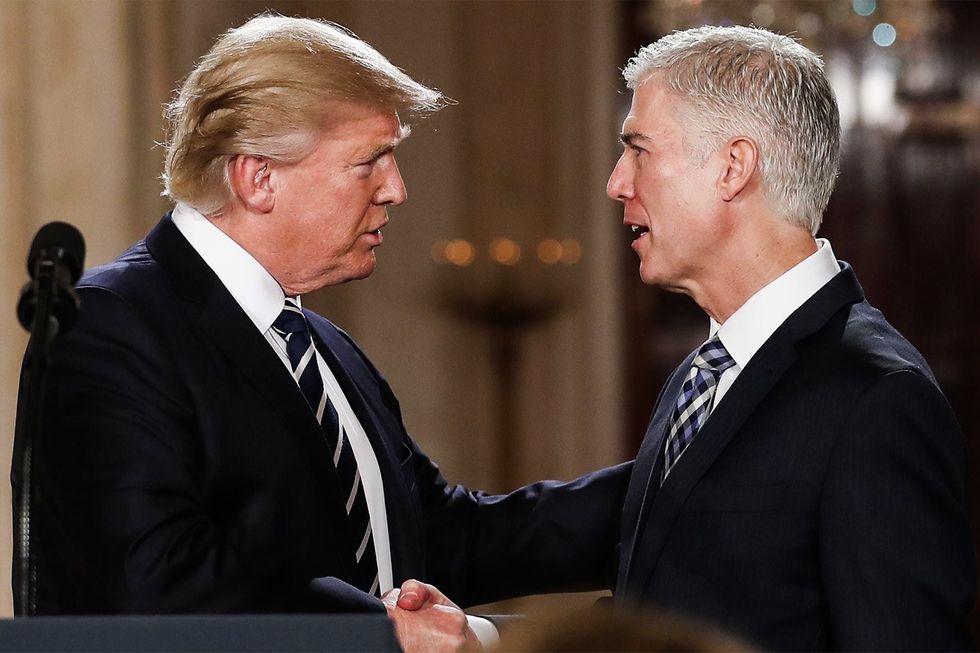On Friday, Neil Gorsuch was confirmed as the 113th justice of the Supreme Court, filling the seat left vacant by the death of conservative Antonin Scalia in February 2016. The confirmation was the result of a shift in Senate rules—changing the threshold from 60 Senate votes to a simple majority of at least 51. The final vote for Gorsuch was 54-45, with one Republican senator absent. This concludes a week of Democratic filibustering and Republicans invoking the so-called “nuclear” option, which changed the threshold.
The nuclear option was first introduced to the Senate by Harry Reid in 2013, the Democratic majority leader at the time. Reid introduced the option in relation to “federal judicial nominees and executive-office appointments,” requiring a simple majority rather than the 60-vote supermajority. The nuclear option was in response to Republicans filibustering then-President Obama’s nominations—a similar situation to the present day. However, in 2013, Reid stressed that Supreme Court nominees would still need to adhere to the 60-vote rule. That has now been altered.
The change in voting follows a contentious 14 months since the death of Justice Scalia. President Obama nominated Democratic Merrick Garland, largely a centrist by most measures, to fill the spot. Republicans, led by Senate Majority Leader Mitch McConnell, blocked the nomination and refused to even hold a hearing, on the basis that a “lame-duck” president should not be able to nominate a Supreme Court justice. During his tenure, Obama had nominated (successfully) Judge Sonia Sotomayor and Solicitor General Elena Kagan. Both of his nominations reached the 60-vote supermajority (68 and 63 respectively).
The Democratic filibuster was in theory a response to Gorsuch’s past of siding with corporations rather than people, but could also be viewed as a reaction to Garland’s complete blocking. Indeed, Gorsuch (an originalist like Scalia) has seen a rather unique journey to the Supreme Court—Republicans blocking the sitting President’s nomination and eventually changing the rules to vote in Gorsuch.
The 60-vote supermajority is supposed to guarantee a level of centrism. The nomination should ideally be moderate enough to appeal to both sides, because the Supreme Court is supposed to operate without party lines or political in-fighting. With the change of the threshold, a major part of what the Senate has prided itself on (affording more rights to the minority party than any other chamber) has disappeared. A President whose party holds the Senate majority can be virtually guaranteed that his nominations will go through. There is no more “moderation” litmus test. In the House of Representatives, the minority party holds far less sway and power—something the Senate has prided itself on doing the opposite.
While Gorsuch’s nomination keeps the ideological DNA of the court the same (four liberal judges, four conservatives, and Justice Kennedy as the swing vote), several justices (liberal Ginsberg, liberal Breyer and neutral-ish Kennedy) are older than 70. With the new rule of simple majority, there is an increased likelihood that Trump has all the room he wants to nominate more conservative judges. Already, the 49-year-old Gorsuch will be able to affect law for decades to come.
The change in rules was dramatic but not unexpected. The “nuclear option” has been thrown around and threatened since Gorsuch was announced as President Trump’s nominee. It concludes a saga of political polarization and tension over the issue since the death of Antonin Scalia. However, especially in the context of the current political situation, it’s difficult not to feel like this change in the rules has more ominous implications down the line.

















